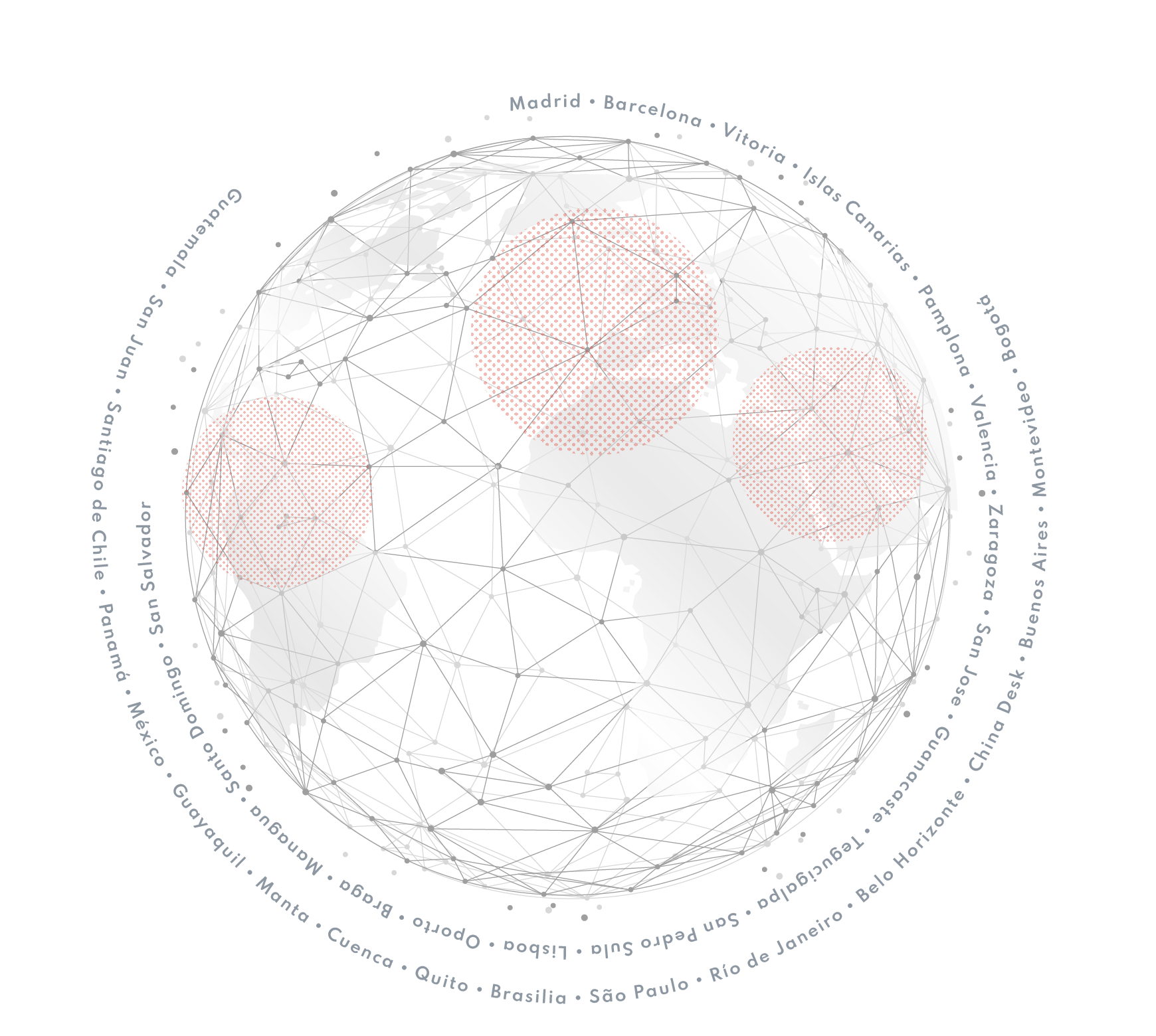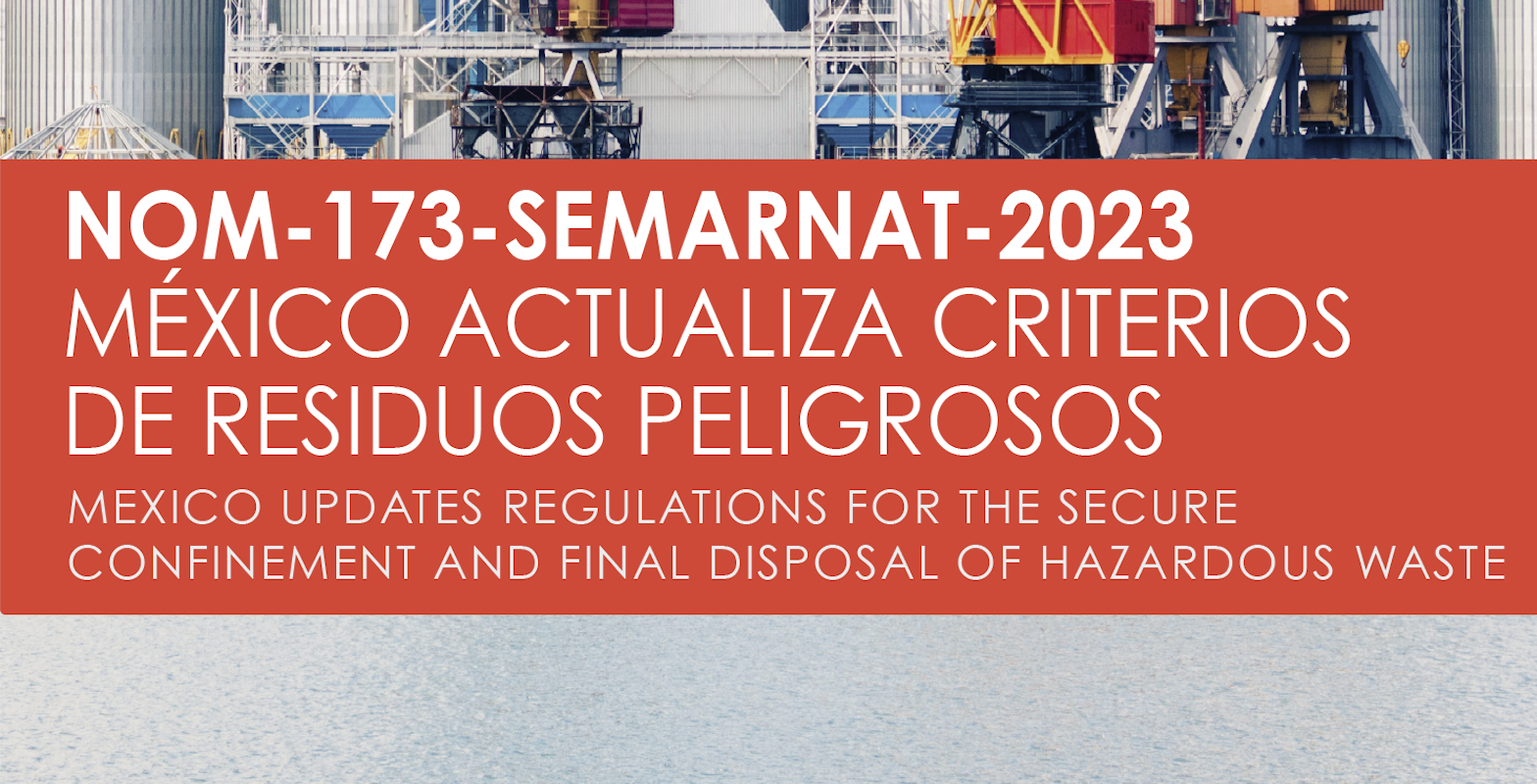Mexico Updates Regulations for the Secure Confinement and Final Disposal of Hazardous Waste with the New NOM-173-SEMARNAT-2023 Standard
Mexico’s Ministry of the Environment has published the NOM-173-SEMARNAT-2023 Standard, which establishes new technical regulations for the management of hazardous waste in Mexico, effective April 29, 2024. This regulation updates the criteria for controlled containment, impacting the construction and operation of facilities and the management of hazardous substances. It also supersedes three previous regulations, enhancing the accountability of waste generators.
Legal memo published in Foro Juridico.
The Ministry of the Environment (SEMARNAT) has issued the NOM-173-SEMARNAT-2023 Standard (NOM, for its initials in Spanish), which establishes the technical criteria for the design, construction, operation, and closure of infrastructure dedicated to the controlled confinement of hazardous waste in Mexico. This NOM will become effective on April 29, 2024.
NOM-173-SEMARNAT-2023 also aims to unify and update the technical criteria previously established in the following NOMs: NOM-056-SEMARNAT-1993[1] , NOM-057-SEMARNAT-1993[2] and NOM-058-SEMARNAT-1993[3] .
The implementation of NOM-173-SEMARNAT-2023 will render the provisions of the three aforementioned NOMs non-binding and obsolete. These were issued in accordance with now-outdated legal provisions and established technical requirements that, since their initial publication in 1993, have become inadequate for the confinement and final disposal of hazardous waste.
NOM-173-SEMARNAT-2023 establishes, mainly, the following:
- The construction requirements for confinement cells located within sites that provide services to third parties must adhere to the provisions of NOM-055-SEMARNAT-2003.
- The requirements to be observed by the leachate collection and extraction and gas conduction systems where the confinement and final disposal of hazardous waste is carried out, as well as their complementary infrastructure.
- Those responsible for controlled confinement are required to carry out the following at the sites where the cells and other confinement infrastructure are located:
-
-
- Control the entry and exit of vehicles transporting waste, personnel, materials, and machinery into and out of the controlled landfill.
- Prevent the passage of persons not involved in the activities of the controlled confinement.
- Establish measures to restrict the access of wildlife species to the areas of operation, in accordance with the provisions of the environmental impact statement of the project in which the confinement is carried out; and
- To have fixed or portable equipment for measuring radioactivity at the entrance of the facilities.
-
- Weighing, sampling and analysis requirements for hazardous waste received for confinement and final disposal.
- Characteristics to be observed by hazardous waste confined in cells and other infrastructure developed in accordance with this NOM.
It is important that the aforementioned requirements be taken into account not only by those companies directly involved in the confinement and final disposal of hazardous waste but also by any entity that generates hazardous waste. In fact, under the provisions of the General Law for the Prevention and Comprehensive Management of Waste, generators of hazardous waste have joint and several liabilities. Therefore, conducting due diligence regarding compliance with the regulations applicable to each phase of hazardous waste management is advisable.
________
Environment and Sustainability Area of ECIJA Mexico
socios.mexico@ecija.com
[1] NOM-056-SEMARNAT-1993, which establishes the requirements for the design and construction of the complementary works of a controlled hazardous waste landfill;
[2] NOM-057-SEMARNAT-1993, which establishes the requirements to be observed in the design, construction and operation of controlled hazardous waste landfill cells;
[3] NOM-058-SEMARNAT-1993, which establishes the requirements for the operation of a controlled hazardous waste landfill.





